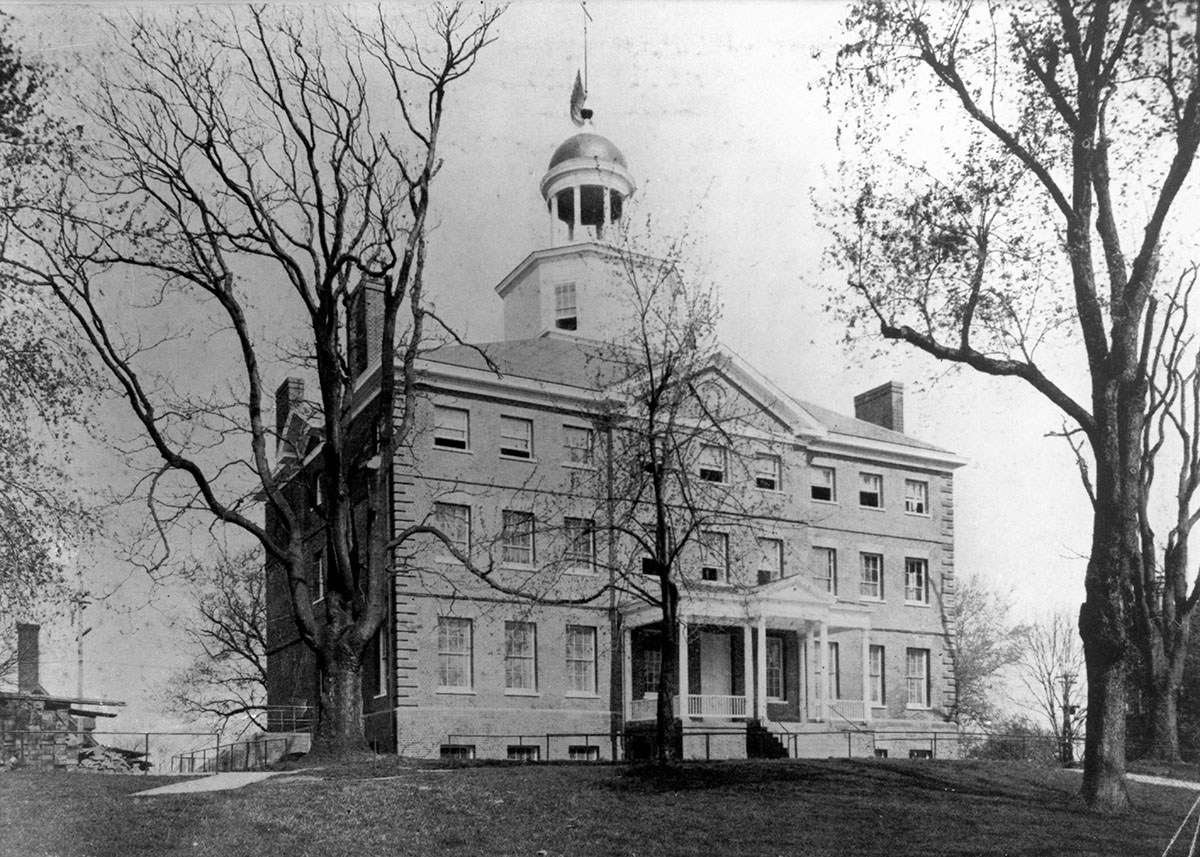
ANNAPOLIS—In the aftermath of the 1909 fire that burned down McDowell Hall, discussion began immediately about whether to restore the building to its former glory or to demolish it and erect a more modern structure in its place.
“It was a serious blow, both financially and sentimentally, for the college,” Tench Tilghman wrote in Early History. “McDowell Hall was the most important link with the St. John’s of the eighteenth century and with provincial Maryland.”
While most of the building was either lost of damaged, the thick masonry walls remained largely intact. The question was whether to use what remained as the foundation for reconstruction.
While many supported full reconstruction, there were some who thought there was an opportunity for the college to build something new on the site. In McDowell Hall at St. John’s College in Annapolis, John Christensen wrote “the disaster presented an opportunity to be done with an inconvenient relic and to obtain a more spacious and efficient building in its place.”
The St. John’s board consulted two Baltimore architecture firms that agreed the building could be salvaged. However, they recommended “demolition followed by construction of a thoroughly modern structure on the site.”
Seeking a middle path, the board recommended restoring the front and sides but adding an auditorium and additional classroom space.
Pressure from alumni, who declared that they would contribute only to a full restoration, ultimately determined the college’s direction. The board adopted a plan to restore the building as closely as possible to its original design, using any available original materials. In September 1909, a building contract was negotiated and by June 1910 the project was nearing completion.
Some modifications were allowed. Builders divided the large room on the third floor into classrooms, did not restore the columns in the chapel, and changed the stairway in the east entrance hall from a steep, straight stairway to a square one. Overall, the restored McDowell was a genuine success.
“Every requirement of a first class college academic hall” was met, according to the yearbook.
“While the fire raged we knew it not, but it was a blessing in disguise,” the writers continued in the yearbook. “Out of the ashes and ruins has arisen a new and greater McDowell, thoroughly modern, a credit to the college and a monument not only to the old structure, but to the loyalty of the alumni, who have contributed so liberally to the reconstruction funds.”
Another fire, smaller in scale, took place at McDowell in 1952. The fire damaged the Great Hall, the bookstore, and the basement. The total cost of repairs after this fire exceeded the entire 1909-10 reconstruction.
McDowell, originally constructed in 1742 but not completed until 1789, is the third oldest building on campus. The Chancellor Johnson House (1720), originally located on Northwest Street, was moved to campus in 1937, and the Carroll Barrister House (1722-23), which now serves as the college’s admissions building, was moved from its location on Main Street in 1955.
—Brady Lee (AGI14)

